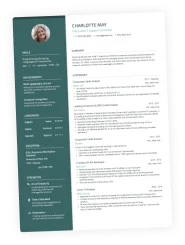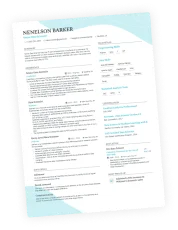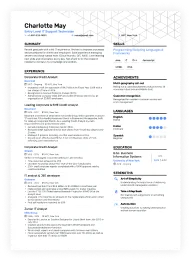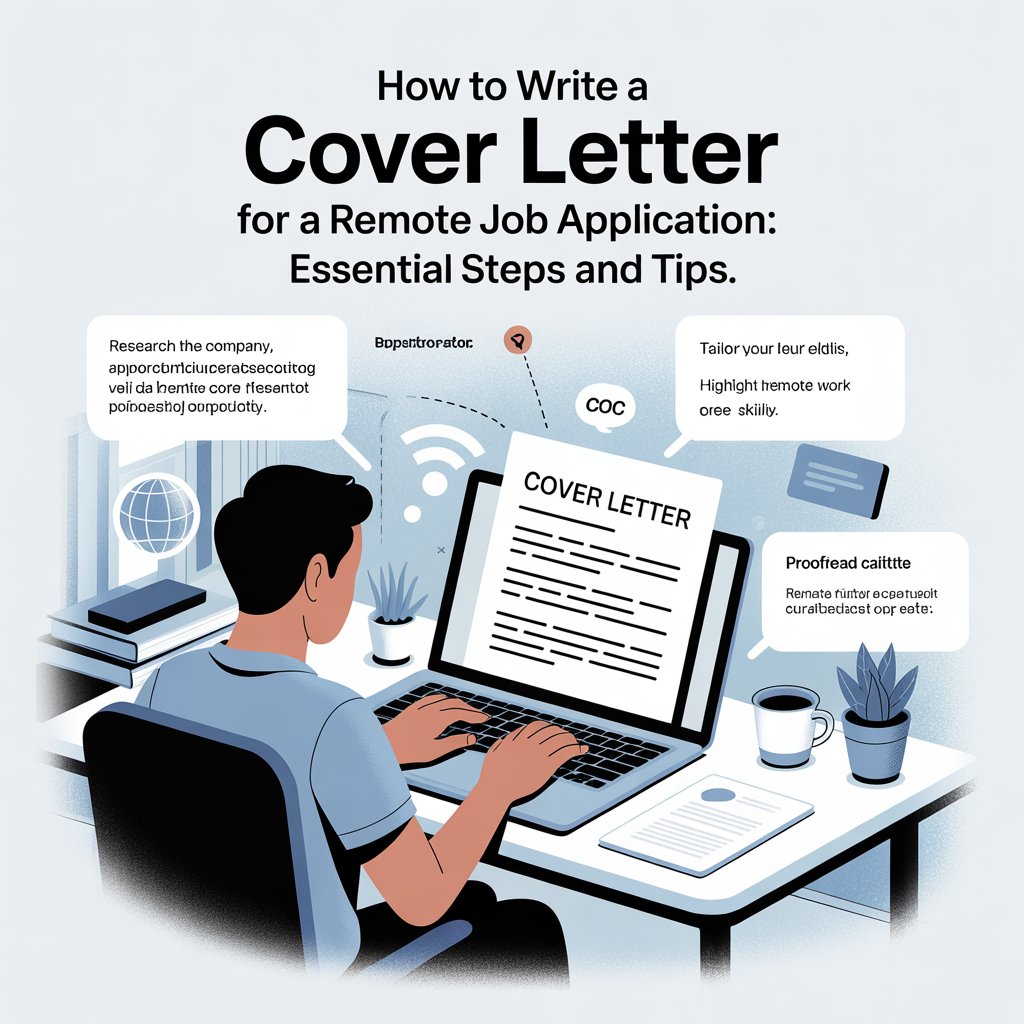Writing a cover letter for Upwork can feel like a daunting task, especially when you’re trying to stand out among many skilled freelancers. But here’s the thing: a well-crafted cover letter can be your ticket to landing that dream gig. It’s not just about listing your skills; it’s about connecting with potential clients and showing them why you’re the right fit for their project. In this article, we’ll break down how to create a compelling cover letter that grabs attention and gets you hired.
Key Takeaways
- Personalize your cover letter for each job application.
- Focus on the client’s needs and how your skills can meet them.
- Keep your cover letter concise, ideally between 150-200 words.
- Use specific examples of your past successes to demonstrate your capabilities.
- Proofread your letter to avoid any mistakes that could hurt your chances.
Understanding The Importance Of A Cover Letter For Upwork
Defining A Cover Letter In The Freelance Landscape
In the freelance world, a cover letter on Upwork is more than just an introduction; it’s your chance to make a strong first impression. Think of it as an extension of your profile, a way to showcase why you’re the perfect fit for a specific project. It allows you to personalize your proposal and demonstrate that you truly understand the client’s needs. It’s about showing, not just telling, why you’re the ideal freelancer for the job. A well-crafted cover letter can significantly increase your chances of landing your dream freelance job.
Why Your Upwork Cover Letter Makes A Difference
Upwork is a competitive marketplace, and a generic proposal simply won’t cut it. Your cover letter is what sets you apart. Here’s why it matters:
- Provides Context: It lets you expand on your skills and experience beyond what’s listed in your profile. You can explain how your unique background makes you the right person for the job.
- Cuts Through the Noise: A strong cover letter helps you stand out from the crowd. It shows you’ve taken the time to understand the project and tailor your application accordingly.
- Demonstrates Communication Skills: A well-written cover letter showcases your professionalism and ability to communicate effectively, which are essential qualities for any freelancer. You can also use a cover letter for an entry-level job to show your enthusiasm.
- Addresses Specific Requirements: It allows you to highlight skills directly relevant to the project’s needs, demonstrating your understanding of the client’s goals.
A compelling cover letter is your opportunity to connect with the client on a personal level, showcasing your understanding of their project and how your skills align with their needs. It’s about building trust and demonstrating your commitment to delivering exceptional results.
Key Elements Of An Effective Cover Letter
To make your cover letter truly effective, focus on these key elements:
- Personalization: Tailor each letter to the specific job description and client. Avoid generic templates.
- Clarity: Use clear, concise language to explain your skills and experience. Make it easy for the client to understand why you’re a good fit.
- Relevance: Highlight the skills and experience that are most relevant to the job. Don’t include information that isn’t necessary.
- Proofreading: Always proofread your cover letter carefully before submitting it. Errors can make you look unprofessional. You can find tips on writing effective cover letters online.
- Call to Action: End with a clear call to action, such as inviting the client to schedule a call or review your portfolio.
Crafting A Personalized Cover Letter For Upwork
Researching The Client’s Needs
Before you even think about typing a single word, do your homework. Really dig into what the client is asking for. Don’t just skim the job description; analyze it. What are their pain points? What specific skills are they craving? Look at their past projects and reviews, if available. This isn’t about finding dirt; it’s about understanding their style and expectations. The more you know, the better you can tailor your cover letter to show you’re the perfect fit. It’s like being a detective, but instead of solving a crime, you’re solving a client’s problem. Understanding the client’s needs is the first step to effective Upwork cover letter writing.
Tailoring Your Skills To The Job
Now that you know what the client needs, it’s time to connect your skills to those needs. Don’t just list your skills; explain how they’ll help the client achieve their goals. For example, instead of saying "I’m proficient in SEO," say "I can improve your website’s search engine ranking, leading to more organic traffic and increased sales." Be specific and quantify your achievements whenever possible. Show, don’t tell. Think of it as building a bridge between your abilities and the client’s desires. Make sure that bridge is strong and easy to cross. If you’re applying for a job with no experience, focus on transferable skills and enthusiasm to make a strong case.
Using Client Language To Connect
One of the most effective ways to make a connection with a potential client is to use their own language. Pay attention to the words and phrases they use in their job description and incorporate them into your cover letter. This shows that you’ve not only read their description carefully but also understand their perspective. It creates a sense of familiarity and trust. It’s like speaking their language, literally.
Using the client’s language isn’t about mimicking them; it’s about demonstrating that you’re on the same wavelength. It shows that you understand their needs and can communicate effectively with them.
Here’s a simple example:
- If they say they need someone who is "detail-oriented," use that phrase in your cover letter.
- If they emphasize "fast turnaround times," highlight your ability to deliver quickly.
- If they use specific industry jargon, show that you’re familiar with it.
Structuring Your Cover Letter For Maximum Impact
Starting With A Strong Hook
To make a lasting impression, your cover letter needs to grab the client’s attention right away. Think of it as your opening statement. A strong hook can be a question, a surprising statistic, or a bold statement that directly addresses the client’s needs. Avoid generic greetings and instead, try something that shows you’ve actually read and understood the project description. For example, if they’re looking for a writer with experience in the tech industry, you might start with: "I noticed you need someone who understands the nuances of blockchain technology…"
Highlighting Relevant Experience
After your hook, it’s time to showcase your skills and experience. But don’t just list everything you’ve ever done. Focus on what’s relevant to the specific job you’re applying for. If the client needs a social media manager, talk about your success in growing followers, increasing engagement, or driving traffic. Use specific examples and, if possible, quantify your achievements. For instance:
- Increased Instagram followers by 30% in three months.
- Drove a 20% increase in website traffic through targeted Facebook ads.
- Managed a social media budget of $5,000 per month with a positive ROI.
Remember, clients are looking for solutions to their problems. Show them how your past experience makes you the perfect person to solve those problems.
Concluding With A Call To Action
End your cover letter with a clear and confident call to action. Don’t just say "I hope to hear from you soon." Instead, be proactive and suggest the next step. This could be scheduling a call, sending over additional samples, or even offering to complete a small task to demonstrate your skills. For example, you could say, "I’m available for a brief call next week to discuss your project in more detail. Would Tuesday or Wednesday work for you?" or "I’ve attached a sample article on a similar topic. I’m confident I can craft the best cover letter for Upwork for your needs."
Common Mistakes To Avoid In Your Upwork Cover Letter
Generic Templates That Lack Personalization
It’s tempting to use a generic cover letter template, but resist! Clients can spot these a mile away, and it shows a lack of effort. Your cover letter should always be tailored to the specific job posting. Think of it as a first impression – you wouldn’t wear the same outfit to a business meeting and a beach party, right? Similarly, your cover letter needs to reflect the unique requirements of each project. To avoid this, always research the client’s needs and tailor your skills to the job. This shows you’ve taken the time to understand their requirements and are genuinely interested in the project. Don’t forget to integrate your Upwork profile with your cover letter for a cohesive brand.
Overly Long And Wordy Letters
Clients are busy people. They don’t have time to read a novel. Keep your cover letter concise and to the point. Aim for brevity. Focus on the most relevant information and cut out any unnecessary fluff.
Here’s a simple guideline:
- Introduction: 1-2 sentences
- Body: 3-4 sentences highlighting relevant skills and experience
- Conclusion: 1-2 sentences with a clear call to action
Remember, quality over quantity. A short, impactful cover letter is far more effective than a long, rambling one.
Neglecting To Proofread
Typos and grammatical errors are a huge turn-off. They make you look unprofessional and careless. Always, always, always proofread your cover letter before submitting it. It might be helpful to ask a friend or family member to read it over as well. Fresh eyes can often catch mistakes that you might have missed. Consider using grammar and spell-check tools, but don’t rely on them completely. They’re not always accurate, and they won’t catch everything. Proofreading is a crucial step in structuring a customer service cover letter effectively.
Here’s a checklist to help you proofread:
- Check for typos and spelling errors.
- Check for grammatical errors.
- Make sure your sentences are clear and concise.
- Read it aloud to catch any awkward phrasing.
Effective Strategies For Writing A Compelling Cover Letter
Using Storytelling To Engage Clients
Let’s be real, a wall of text can be a real snooze-fest. Instead of just listing your skills, try weaving a little story. Think about a time you solved a problem for a client that’s similar to the one in the job description. How did you approach it? What were the challenges? What was the awesome result? This makes you more relatable and shows you’re not just a robot spitting out keywords. It’s about making a connection. You want them to think, "Hey, this person gets it!" Storytelling can transform a bland cover letter into something memorable.
Focusing On Results And Achievements
Clients care about one thing: results. They want to know you can actually do what you say you can do. So, instead of saying "I’m a great writer," say "I increased website traffic by 30% in one month through targeted blog posts." Numbers speak volumes. Use action verbs and quantify your achievements whenever possible. It’s not bragging if it’s true and relevant. Make sure to highlight your relevant wins to show them you understand their needs.
Incorporating Keywords From The Job Description
Okay, this might seem obvious, but it’s super important. Clients often use software to filter applications based on keywords. So, if they’re looking for a "social media marketing expert" and you don’t mention those words, your cover letter might not even get seen. But don’t just stuff keywords in randomly. Make sure they flow naturally and are relevant to your experience. It’s about showing you’ve actually read the job description and understand what they’re looking for. Think of it as a treasure hunt for the client, making it easy for them to see you’re the right fit.
Think of your cover letter as a conversation starter, not a resume regurgitation. It’s your chance to show some personality and connect with the client on a human level. Don’t be afraid to be yourself (within reason, of course).
Examples Of Successful Cover Letters For Upwork
Analyzing High-Response Cover Letter Samples
Looking at cover letters that have worked well for others can give you a solid foundation. It’s like peeking at the answer key, but you still have to do the work yourself. Pay attention to how successful freelancers structure their letters, what kind of language they use, and how they highlight their skills. Consider these points when reviewing samples:
- The opening paragraph: Does it grab your attention?
- The body: How well does it connect the freelancer’s skills to the job requirements?
- The closing: Is there a clear call to action?
Remember, the goal isn’t to copy, but to understand what makes a cover letter effective. Use these samples as inspiration to craft your own unique and compelling message.
Learning From Real-Life Success Stories
Beyond just reading samples, try to find real-life stories of freelancers who’ve landed jobs with their cover letters. These stories often provide valuable context and insights that you won’t find in a generic template. Look for case studies, blog posts, or forum discussions where freelancers share their experiences. What were the specific challenges they faced? How did they tailor their cover letters to overcome those challenges? What were the results? Understanding the "why" behind a successful cover letter can be just as important as understanding the "what."
Adapting Examples To Fit Your Style
Once you’ve analyzed successful cover letters and learned from real-life stories, it’s time to adapt those lessons to your own style. Don’t try to be someone you’re not. Let your personality shine through, while still maintaining a professional tone. Think about your unique strengths and how you can best showcase them in your cover letter. An adaptable freelancer cover letter sample can be a great starting point, but it’s essential to make it your own. Consider these points:
- Use your own voice and language.
- Highlight your specific skills and experiences.
- Tailor the letter to each individual job posting.
Tips For Following Up After Submitting Your Cover Letter
When And How To Follow Up
Knowing when and how to follow up is key. Don’t be that person who sends multiple messages a day. A good rule of thumb is to wait about a week after submitting your proposal. If you haven’t heard back, a polite follow-up can show your continued interest without being pushy. Remember, clients are busy, and sometimes things get overlooked.
Here’s a simple breakdown:
- Wait approximately 5-7 days after submitting your proposal.
- Send a brief, polite message expressing your continued interest.
- Avoid bombarding the client with multiple follow-ups.
Crafting A Brief Follow-Up Message
Your follow-up message should be concise and to the point. Reiterate your interest in the project and briefly highlight why you’re a good fit. Avoid simply asking, "Did you read my proposal?" Instead, try something like, "I wanted to reiterate my enthusiasm for this project and highlight my experience in [relevant skill]. I’m available to answer any questions you may have." This shows you’re proactive and still engaged.
A well-crafted follow-up can make you stand out from other freelancers. It demonstrates your professionalism and genuine interest in the project. However, it’s important to strike a balance between being persistent and being annoying.
Maintaining Professionalism In Communication
Always maintain a professional tone in all your communications. Even if you’re feeling frustrated by the lack of response, avoid being demanding or accusatory. Thank the client for their time and consideration, and express your understanding of their busy schedule. Remember, you’re building a reputation, and professional communication is crucial for long-term success. Also, make sure your cover letter has all the essential elements to attract the client’s attention.
Utilizing Feedback To Improve Your Cover Letter
Seeking Client Feedback On Proposals
Okay, so you’ve been sending out cover letters on Upwork, but are you really listening to what the silence is telling you? Or, even better, when you actually get a response, are you paying attention to the feedback? It’s easy to just keep doing the same thing, hoping for a different result, but that’s not how this works. You need to actively seek feedback. Don’t be afraid to ask clients why they chose someone else. Most won’t respond, but the ones who do can give you gold.
- Ask politely for constructive criticism.
- Frame your request as a learning opportunity.
- Be prepared for honesty, even if it stings.
Adjusting Your Approach Based On Responses
So, you got some feedback. Now what? Don’t just ignore it! This is where the real improvement happens. Did they say your pricing was too high? Maybe you need to rethink your rates or better justify your value. Did they say your writing was unclear? Time to sharpen those skills. The key is to be adaptable. Don’t take criticism personally; see it as a chance to grow. I know it’s hard, but try to detach your ego from your work. It’s just business, after all. Make sure you address client concerns in your next cover letter.
Continuously Refining Your Writing Skills
Writing a great cover letter isn’t a one-time thing; it’s a continuous process. The more you write, the better you’ll get. But it’s not just about quantity; it’s about quality. Read books on copywriting, take online courses, and, most importantly, practice. And don’t forget to keep up with the latest trends in your industry. What worked last year might not work today. The Upwork landscape is always changing, so you need to be too. Remember to check the visual appeal of your cover letter.
Think of your cover letter as a living document. It should evolve as you gain experience and learn what works best for you. Don’t be afraid to experiment and try new things. The goal is to find a formula that consistently gets you results.
The Role Of A Cover Letter In Your Overall Upwork Profile
Integrating Your Cover Letter With Your Profile
Your Upwork profile is your digital handshake, but your cover letter? That’s where you show you’ve actually listened. Think of your profile as the highlight reel and the cover letter as the personalized pitch. A well-written cover letter complements your profile by directly addressing the client’s needs and demonstrating how your skills align with their project. It’s not enough to just list your qualifications; you need to show how they solve the client’s specific problems. It’s about making a connection that goes beyond the standard resume format.
How A Strong Cover Letter Complements Your Portfolio
Your portfolio showcases what you can do; your cover letter explains why you’re the best choice for this particular job. A strong cover letter doesn’t just repeat what’s in your portfolio; it contextualizes it. For example, if you’re a graphic designer, your portfolio might show a range of logos you’ve created. Your cover letter can then explain the specific design choices you made for a similar project and how you’d apply that experience to the client’s current needs. It’s about adding that extra layer of insight that makes your application stand out. To attract high-paying clients on Upwork, make sure your cover letter and portfolio work together.
Building A Cohesive Brand As A Freelancer
Your cover letter is a key part of building your brand as a freelancer. It’s an opportunity to showcase your personality, communication style, and professionalism. Consistency is key. Make sure the tone and style of your cover letter align with the rest of your Upwork presence, including your profile, portfolio, and any other communication you have with clients. A cohesive brand builds trust and credibility, making clients more likely to choose you over other freelancers. To increase earnings as a freelance writer, ensure your brand is consistent across all platforms.
Here are some ways to ensure brand consistency:
- Use a professional tone in all communications.
- Maintain a consistent visual style in your portfolio and profile.
- Highlight your unique selling points in both your cover letter and profile.
A cohesive brand tells clients that you’re not just a freelancer; you’re a professional who takes their work seriously. It’s about creating a consistent and memorable impression that sets you apart from the competition.
A cover letter is a key part of your Upwork profile. It helps you stand out from other freelancers by showing your personality and skills. A good cover letter can make a big difference in getting hired. If you want to learn more about how to create an amazing cover letter, visit our website today!
Wrapping It Up
In conclusion, crafting a standout cover letter for Upwork doesn’t have to be a daunting task. By following the tips and examples shared here, you can create a cover letter that not only showcases your skills but also speaks directly to what clients are looking for. Remember, it’s all about making a connection and showing how you can meet their needs. As you gain more experience on Upwork, keep refining your approach based on what works best. With time and practice, you’ll be well on your way to landing those freelance gigs you’ve been dreaming of.
Frequently Asked Questions
What is the purpose of a cover letter on Upwork?
A cover letter on Upwork introduces you to potential clients. It shows why you are a good fit for the job and helps you stand out from other freelancers.
Why should I personalize my cover letter?
Personalizing your cover letter makes it more relevant to the job. It shows the client that you understand their needs and are genuinely interested in their project.
What should I include in my Upwork cover letter?
Your cover letter should include a brief introduction, a summary of your relevant skills and experiences, and a conclusion that encourages the client to contact you.
How long should my cover letter be?
Aim for 150 to 200 words. Clients appreciate concise letters that get straight to the point.
What common mistakes should I avoid?
Avoid using generic templates, writing overly long letters, and forgetting to proofread for errors.
How can I make my cover letter more engaging?
Use storytelling to share relevant experiences and focus on specific results you’ve achieved in past projects.
Is it important to follow up after submitting my cover letter?
Yes, following up shows your interest in the job. A polite follow-up message can help keep you on the client’s radar.
How can I improve my cover letter over time?
Seek feedback from clients, adjust your approach based on what works, and keep refining your writing skills as you gain more experience.












